Related Research Articles
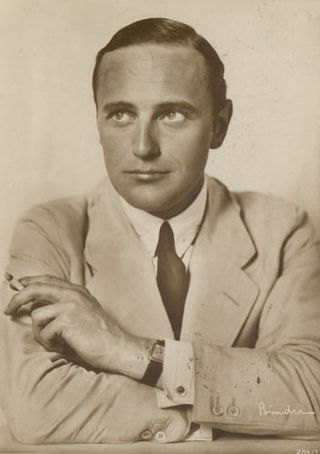
Harry Liedtke was a German film actor.
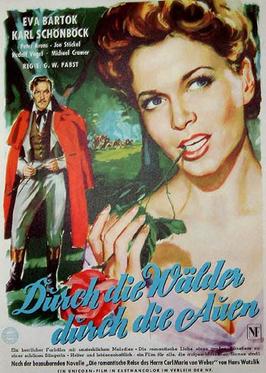
Through the Forests and Through the Trees is a 1956 West German historical comedy film directed by G. W. Pabst and starring Eva Bartok, Peter Arens, and Joe Stöckel. It was Pabst's final film. The film's sets were designed by the art director Ludwig Reiber. It was shot at the Bavaria Studios in Munich and on location in Venice and Zwiesel. It was made in Eastmancolor.
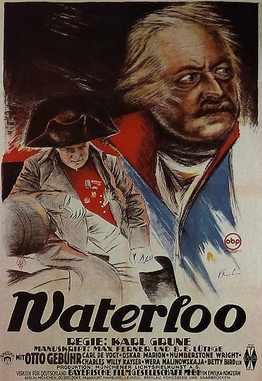
Waterloo is a 1929 German silent war film directed by Karl Grune and starring Charles Willy Kayser, Charles Vanel and Otto Gebühr. It depicts the victory of the Allied Forces over Napoleon at the Battle of Waterloo in 1815.
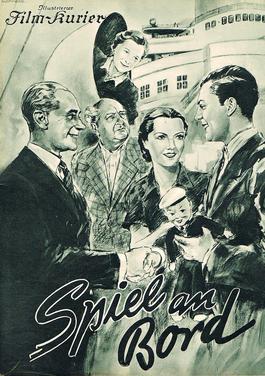
Game on Board is a 1936 German comedy crime film directed by Herbert Selpin and starring Viktor de Kowa, Susi Lanner and Alfred Abel. Location shooting took place in Bremerhaven and New York and on the Atlantic crossing of the ocean liner SS Bremen. Interior scenes were shot at the Tempelhof Studios in Berlin. The film's sets were designed by the art director Erich Czerwonski.

Prinz Louis Ferdinand is a 1927 German silent historical drama film directed by Hans Behrendt and starring Kurt Junker, Christa Tordy, Hans Stüwe and Jenny Jugo. It was partly shot at the EFA Studios in Berlin. The film's sets were designed by the art director Erich Zander It was based on the life of Prince Louis Ferdinand of Prussia (1772–1806). It was part of the series of Prussian films made during Weimar Germany.

Christa Tordy was a German film actress. She was discovered while visiting her cousin Mady Christians in Berlin, and briefly became a leading star before retiring after marrying Harry Liedtke. She was murdered along with her husband by the Soviet Red Army at her home during its invasion of Germany during World War II.

Heaven on Earth is a 1935 Austrian musical comedy film directed by E. W. Emo and starring Lizzi Holzschuh, Ilona Massey, and Heinz Rühmann.
The Countess of Sand is a 1928 German silent drama film directed by Hans Steinhoff and starring Christa Tordy, Käthe von Nagy and Jack Trevor. It was shot at the Grunewald Studios in Berlin and on location in East Frisia. The film's art direction was by Otto Erdmann and Hans Sohnle.
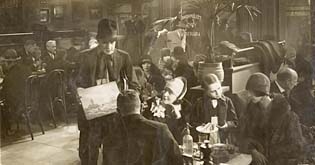
The Gambling Den of Montmartre is a 1928 German silent film directed by Willy Reiber and Franz Seitz and starring Eric Barclay, Suzy Vernon and Maurice de Féraudy.

The Office Manager is a 1931 German comedy film directed by Hans Behrendt and starring Felix Bressart, Hermann Thimig and Maria Meissner.

Tonelli is a 1943 German drama film directed by Victor Tourjansky and starring Ferdinand Marian, Winnie Markus and Mady Rahl. It was shot at the Bavaria Studios in Munich and at the Deutsches Theater in the city. The film's sets were designed by the art director Ludwig Reiber. It is a circus film, a popular genre in Germany during the war years.

A Woman Like You is a 1933 German comedy film directed by Carl Boese and starring Liane Haid, Georg Alexander, and S. Z. Sakall.It was shot at the Bavaria Studios in Munich and on location in Garmisch-Partenkirchen. The film's sets were designed by the art director Ludwig Reiber.

Madame Dares an Escapade is a 1927 German silent film directed by Hans Otto and starring Xenia Desni, Livio Pavanelli and Carmen Cartellieri. It was shot in Vienna.

Midnight is a 1918 German silent crime film directed by Ewald André Dupont and starring Max Landa, Karl Beckersachs and Reinhold Schünzel.
Mary Magdalene is a 1920 German silent drama film directed by Reinhold Schünzel and starring Eduard von Winterstein, Ilka Grüning and Lucie Höflich.
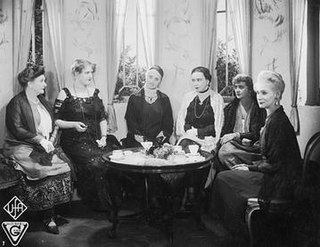
Potsdam or Potsdam, the Fate of a Residence is a 1927 German silent drama film directed by Hans Behrendt and starring Christa Tordy, Hans Stüwe, and Camilla von Hollay.
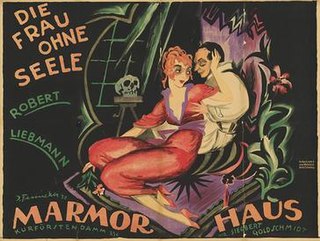
The Woman Without a Soul is a 1920 German silent film directed by Léo Lasko and starring Edith Meller, Werner Krauss and Alfred Abel.
The Game of Love is a 1924 German silent film directed by Guido Parish and starring Marcella Albani, Alfred Abel, and Carl de Vogt.
Tragedy of a Marriage is a 1927 German silent drama film directed by Maurice Elvey and starring Isobel Elsom, Alfred Abel and Paul Richter. It is also known by the alternative title of Human Law. It is still extant.

Ways to a Good Marriage is a 1933 German drama film directed by Adolf Trotz and starring Olga Chekhova, Alfred Abel and Hilde Hildebrand. It was shot at the EFA Studios in Halensee in Berlin. The film's sets were designed by the art directors Heinz Fenchel and Botho Hoefer. The film was based on the ideas of the sexologist Theodore H. Van de Velde and was in the tradition of the enlightenment films of the Weimar Republic. Although his work had already been forbidden by the new Nazi regime, it was not formally banned until 1937 despite protests by Nazi students in Kiel who were successful in having the film pulled from cinemas there.
References
- ↑ Bock & Bergfelder p.2